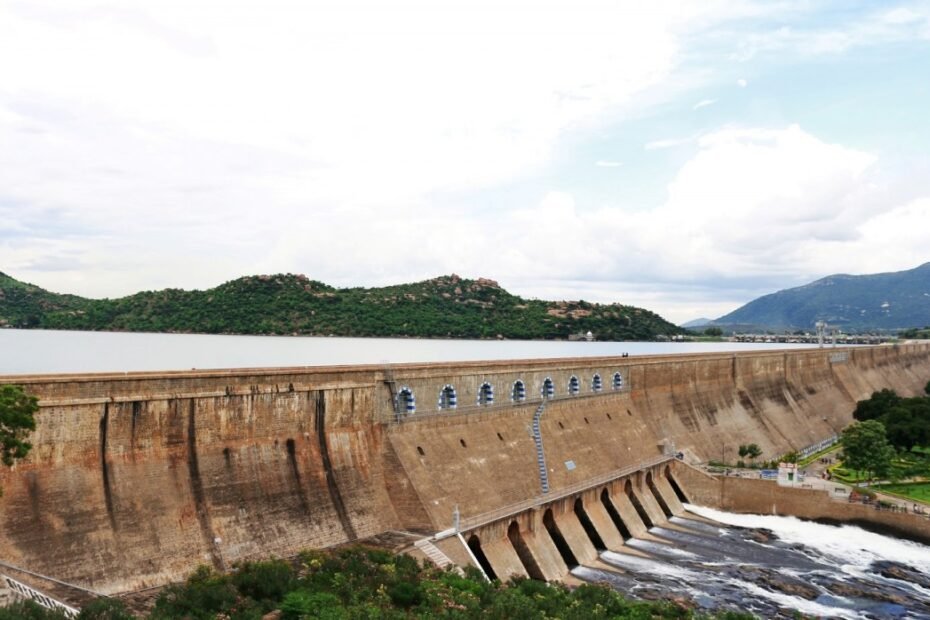The genesis of Mettur Dam can be traced back to the late 19th century when the idea of harnessing the waters of the Cauvery River for irrigation and power generation gained momentum. Sir Arthur Cotton, the renowned British engineer, laid the foundation for this ambitious project. However, it wasn’t until 1934 that the dam was completed under the Madras Presidency, marking a watershed moment in the history of water management in the region.
Mettur Dam is a colossal structure, stretching across the Cauvery River with a length of about 1,700 meters. The dam rises to a height of approximately 66 meters and has a capacity to impound over 90 thousand million cubic feet (TMC) of water. The sheer scale of the dam is awe-inspiring, making it one of the largest in India.
The dam is equipped with 16 radial gates, each towering at 40 feet, allowing for precise control of water flow. The regulated release of water facilitates irrigation downstream, ensuring optimal utilization for agriculture. The dam’s capacity to regulate water flow has been crucial in preventing flooding during the monsoon season.
Beyond its role in irrigation, Mettur Dam stands as a powerhouse, quite literally. The dam houses a hydroelectric power station with a capacity of generating over 100 megawatts of electricity. The synergy of water resources for both irrigation and power generation exemplifies the multi-faceted utility of this engineering marvel.
The dam has been a catalyst in the establishment of industries along its banks. Mettur, once a modest town, burgeoned into an industrial hub, hosting a spectrum of industries ranging from textiles to chemicals. The abundant water supply from the dam served as a critical factor in the growth of these industries, contributing significantly to the regional economy.
The dam’s surroundings offer breathtaking panoramic views, with the mist-covered hills providing a picturesque backdrop. The Mettur Reservoir, created by the dam, extends for miles, creating a serene and captivating landscape that attracts tourists and nature enthusiasts alike.
Mettur Dam is not just an engineering marvel; it is also a recreational haven. The beautifully landscaped parks and gardens along the dam provide a tranquil retreat for visitors. Families, picnickers, and nature lovers find solace amidst the lush greenery and well-maintained spaces.
While Mettur Dam has undeniably contributed to the region’s development, it has also prompted concerns about its environmental impact. The alteration of natural water flow, displacement of flora and fauna, and the challenges of sedimentation are factors that demand careful consideration for sustainable water management.
Over the decades, the dam has faced challenges related to sedimentation and siltation. The accumulation of silt reduces the reservoir’s storage capacity, necessitating periodic dredging operations to maintain its efficiency. Addressing this challenge is crucial for the long-term sustainability of the dam.
As with any aging infrastructure, Mettur Dam requires constant attention and periodic rehabilitation. Modernization efforts, including the incorporation of advanced technologies for water management and power generation, are essential to ensure the dam’s continued effectiveness in the face of evolving challenges.
Conclusion: Mettur Dam stands not just as a colossal structure of concrete and steel, but as a symbol of human endeavor and resilience. Its journey from conception to completion, its impact on agriculture, industry, and the environment, and the challenges it faces underscore the complex interplay between human development and ecological sustainability. As we marvel at the engineering brilliance of Mettur Dam, let us also reflect on the responsibility that comes with managing our water resources for the benefit of present and future generations.

